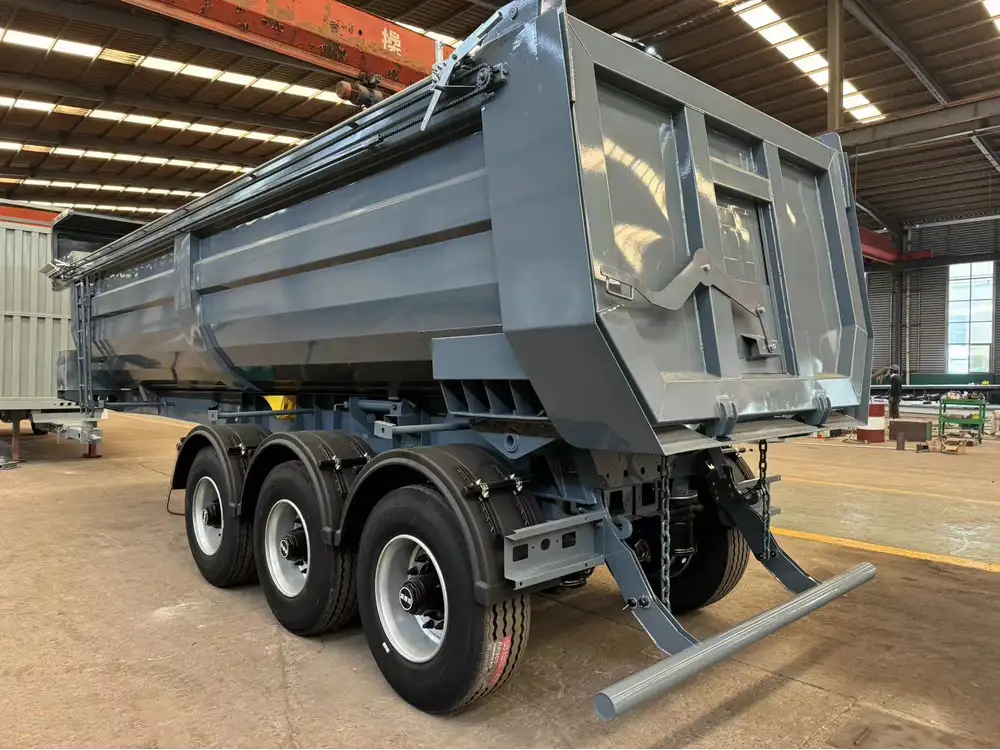In the realm of transportation, particularly within the logistics and freight industry, understanding the intricacies of vehicle fuel tanks is paramount for ensuring efficiency and cost-effectiveness. This article explores the fundamental aspects surrounding fuel tank capacities, including the various factors that influence them, the standard sizes for different types of vehicles, and the implications of fuel tank size on operational costs and efficiency.
1. The Basics of Fuel Tank Capacities
Fuel tank capacity is defined as the amount of fuel a tank can hold, typically measured in gallons for vehicles within the United States. Understanding how many gallons in a fuel tank is crucial for vehicle owners, operators, and fleet managers for several reasons, including planning fuel stops, calculating operational ranges, and budgeting fuel expenses.
Fuel Tank Size Overview
| Vehicle Type | Average Fuel Tank Capacity (gallons) |
|---|---|
| Passenger Vehicles | 12 – 20 |
| Light Trucks & SUVs | 15 – 30 |
| Heavy-Duty Trucks | 50 – 150 |
| Semi-Trailers | 100 – 300 |
| Motorhomes | 30 – 150 |

2. Factors Influencing Fuel Tank Capacity
2.1 Vehicle Type
Different vehicles are designed with varying fuel tank capacities based on their intended use. For example, a compact car typically requires less fuel than a heavy-duty semi-trailer. Thus, manufacturers tailor fuel tank sizes to optimize performance, efficiency, and payload capacity.
2.2 Engine Efficiency
The engine type and efficiency can also dictate how much fuel a vehicle will require. Modern engines often employ advanced technologies that help reduce fuel consumption, enabling vehicles to operate efficiently with smaller tanks while still achieving optimal distance.

2.3 Regulatory and Environmental Considerations
Fuel tanks must adhere to regulatory standards concerning fuel leakage, safety, and emissions. Manufacturers often balance tank size and safety features, leading to variations in capacity across models and brands.
3. Common Fuel Tank Capacities by Vehicle Category
Illustrating the diversity in fuel tank sizes, the following table breaks down the average capacities for various vehicle classes. This can help potential buyers or fleet managers make informed decisions when purchasing or leasing vehicles.
| Vehicle Category | Average Capacity (gallons) | Typical Applications |
|---|---|---|
| Compact Cars | 12 – 15 | Daily commuting, city driving |
| Midsize Cars | 15 – 20 | Family transport, moderate travel |
| Full-Size SUVs | 20 – 30 | Long-distance travel, off-roading |
| Pickup Trucks | 20 – 30 | Hauling, multi-purpose utility |
| Heavy-Duty Trucks | 50 – 100 | Long hauls, freight transportation |
| Semi-Trailers | 100 – 300 | Commercial freight, logistics solutions |
4. The Benefits of Knowing Your Fuel Tank Capacity

4.1 Enhancing Fuel Efficiency
Awareness of the fuel tank capacity allows operators to anticipate refueling needs, thereby minimizing downtime. By strategically planning routes with fuel stops that consider tank size, operators can enhance fuel efficiency and reduce operating costs.
4.2 Calculating Range
The range a vehicle can cover before needing a refill is calculated using the fuel tank capacity. Formulating this allows better planning for long-haul routes, especially for fleet managers who need to optimize deliveries.
Standard Range Calculation:
[ \text{Range} = \text{Fuel Tank Capacity} \times \text{Average Miles Per Gallon (MPG)} ]For example, a semi-trailer with a 200-gallon fuel tank and an average of 6 MPG would have a range of:
[ \text{Range} = 200 \, \text{gallons} \times 6 \, \text{MPG} = 1200 \, \text{miles} ]4.3 Budgeting for Fuel Costs
Understanding how many gallons are stored in a fuel tank facilitates accurate budgeting for fuel costs. Operators can estimate expenses based on current fuel prices, ensuring adequate financial planning for operational commitments.

5. Implications of Fuel Tank Size on Operational Efficiency
5.1 Payload Considerations
For semi-trailers, the fuel tank’s size significantly affects payload capacity. A larger fuel tank may increase the gross weight of the vehicle, impacting the amount of cargo transported.
5.2 Weight Distribution
Properly managing fuel tank capacity is essential for weight distribution. Uneven weight distribution can lead to various issues, such as tire wear and reduced vehicle stability during transit.

5.3 Impact on Driving Range
Vehicles with larger tanks can travel longer distances without refueling, which is particularly advantageous for long-haul trucking operations. However, larger tanks can also mean additional weight, necessitating a balance between tank size and overall vehicle performance.
6. Fuel Tank Types and Their Capacities
6.1 Standard Diesel Tanks for Semi-Trailers
Standard diesel tanks for semi-trailers generally range from 100 to 300 gallons. Below is a comparative analysis:
| Tank Type | Average Capacity (gallons) | Weight (empty) | Materials Used |
|---|---|---|---|
| Single Tank | 100 – 150 | 200 – 300 lbs | Steel/Aluminum |
| Dual Tank | 200 – 300 | 400 – 600 lbs | Steel/Aluminum |

6.2 Fuel Tank Innovations
Modern fuel tanks have seen innovations such as:
- Composite Materials: These are lighter and more durable than traditional metal tanks, improving fuel efficiency.
- Baffled Tanks: Design features that help minimize fuel slosh during transit, enhancing vehicle stability.
- Integrated Fuel Management Systems: These systems provide real-time monitoring of fuel levels, helping to prevent fuel loss and enhancing operational efficiency.
7. How to Choose the Right Fuel Tank Size for Your Needs
Selecting an appropriate fuel tank size requires an understanding of your operational needs, route planning, and vehicle compatibility. Consider the following factors:
7.1 Analyzing Routes and Distances
Understanding commonly traveled routes and the distances affiliated with them will guide the necessary fuel tank capacity. Longer routes require larger tanks to minimize refueling stops.

7.2 Evaluating Vehicle Specifications
Check the manufacturer’s recommendations regarding fuel tank sizes. Depending on vehicle type and design, some vehicles may allow for standard or extended tank options.
7.3 Budgeting for Fuel Efficiency
While larger tanks allow for longer distances, it’s essential to weigh the costs associated with increased fuel consumption when carrying more weight. Balance your operational needs with budget realities.
8. Fuel Tank Maintenance and Monitoring

8.1 Regular Inspections
Regular inspections of fuel tanks are crucial, as they help identify potential issues such as leaks or damage. Both safety and efficiency hinge on maintaining your vehicle’s fuel system.
8.2 Monitoring Fuel Levels
Implementing monitoring systems can provide real-time data about fuel consumption and remaining levels, ensuring timely refueling and preventing unexpected fuel shortages.
8.3 Importance of Clean Fuel
Ensuring that the fuel stored in tanks is free from contaminants is essential. Regular maintenance helps avoid fuel system clogs and enhances overall performance.

Conclusion
Understanding how many gallons in a fuel tank is instrumental in promoting efficiency, cost-effectiveness, and operational success within the transport and logistics industry. By acknowledging the various factors that influence fuel tank capacity—from vehicle type and engine efficiency to regulatory standards—transport operators can make informed decisions that align with their business goals.
Whether you’re considering investing in new vehicles or optimizing your current fleet’s operations, the insights provided in this comprehensive guide will enhance your strategic decision-making. For further assistance, consulting with manufacturers and fuel specialists can yield tailored guidance that meets your specific needs, ultimately paving the way for greater operational efficiency and success.



